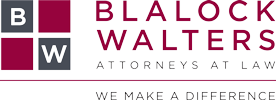Whether a business sale is structured as an asset sale or a stock sale, the buyer usually requires that all existing debt of the target company be paid in full prior to or at the closing. At the height of the coronavirus pandemic many businesses took advantage of the US Small Business Administration’s Payment Protection Program (PPP) Loan program. Other business may have taken out Economic Injury Disaster Loans (EIDLs). How are these PPP Loans and EIDLs handled when the business owner wants to sell?
PAYMENT PROTECTION PROGRAM LOANS
Unlike most other debt, all or part of the PPP Loan is likely to be forgiven. If the PPP Loan has been paid in full or if the SBA has already made a determination of forgiveness and has remitted the forgiveness amount to the PPP lender, the PPP borrower is not required to get the consent of the SBA to sell its business.
If the PPP Loan has not yet been forgiven, however, then both from a practical standpoint and a regulatory standpoint, the buyer and seller need to make specific provisions for the PPP Loan in the agreement. Furthermore, if the sale is taking place within 12 months of the final disbursement of the PPP Loan, the seller/PPP borrower must obtain the consent of the SBA and the PPP lender before going ahead with the deal.
The PPP lender will require the seller to submit a loan forgiveness application (if it hasn’t done so already) and to deposit an amount equal to the outstanding balance of the PPP Loan into an escrow account controlled by the PPP lender until such time as the SBA takes action on the loan forgiveness application. If the sale is taking place more than 12 months after the final disbursement of the PPP Loan, the PPP borrower will not need the consent of the SBA, but will likely still need the consent of the PPP lender.
If both the buyer and the seller have PPP Loans, then in either a stock deal or an asset deal, the PPP borrower and the new owner(s) are responsible for segregating and delineating PPP funds and expenses and providing documentation to demonstrate compliance with PPP requirements by each PPP borrower. In a merger, if both parties have outstanding PPP Loans, the successor is responsible for segregating and delineating PPP funds and expenses and providing documentation to demonstrate compliance.
ECONOMIC INJURY DISASTER LOANS
Unlike PPP Loans, EIDLs are funded and administered directly by the SBA, without the involvement of a bank. Also, unlike the short-term PPP Loan, EIDLs can have a loan term of up to 30 years, making it more likely that a sale will occur during the lifetime of the EIDL.
A stock sale or a merger involving an entity with an EIDL requires the SBA’s consent. Whether SBA consent is required for an asset sale depends upon whether the EIDL is secured or unsecured. If unsecured, SBA consent may not be required. If the EIDL is secured, either by a mortgage on real estate or by a security interest in the borrower’s equipment, the mortgage or security agreement requires that the borrower get the SBA’s approval prior to any sale or transfer of the asset(s) securing the loan.
If you are considering the purchase or sale of a business with an outstanding PPP Loan or EIDL, please consult legal counsel to ensure the documents properly reflect the responsibilities of the parties. Legal counsel will also want to review the loan documents and the regulations to determine whether the SBA’s approval or the approval of the bank is required. Because the SBA is overwhelmed with PPP Loan and EIDL matters at this time, it is important to spot these issues early in the course of the transaction.
The business and corporate attorneys at Blalock Walters have already handled several of these types of transactions and are ready to assist. For more information, contact Matt Lapointe at (941) 748-0100 or mlapointe@blalockwalters.com.


